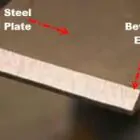Gas can be odourless or have a smell, but it is always explosive and dangerous. Isn’t it? Don’t give up! In fact, many gases are stable and safe. They have become so important that welding can’t be done without them. Shielding gases are used in welding processes like MIG/MAG, TIG, and plasma to make sure the weld is stable and perfect, just like we depend on air to live. So we talk about gas-shielded arc welding…
Which gas will be used as a shield?
If the arc between the electrode and the base material is started, the metal will melt. Because of this, gas shielded arc welding is a type of fusion welding. Shielding gases are used to keep the weld pool of the weld seam from reacting chemically with the air around it. This protects both the arc and the weld pool.
The gas needs to have different properties depending on the gas shielded arc welding system and the welding process. So, the first thing to ask is what kind of shielding gas will be used. Most of the time, there are two types of shielding gases:
Inert shielding gases are ones that don’t react much or at all. Most of the time, they are made of pure argon or helium or mixtures of the two. Most of the time, gas shielded arc welding with inert gases is best for non-ferrous metals, especially aluminium.
The most common type of active shielding gas is pure CO2, which is a reactive gas. Argon can also be used, but it is usually mixed with CO2 or O2 (for example, up to 25% CO2 to 75% argon). Using active gases, gas shielded arc welding is a great way to join steel.
MIG/MAG is the gas shielded arc welding process that is used the most.
Gas-shielded metal arc welding is another name for both MIG and MAG welding (GMAW). In this case, the welding wire is both a source of energy and a filler metal at the same time. During dip-transfer welding, when the wire electrode touches the base material, it creates a short circuit. Both the base material and the wire electrode melt, and the material moves from one place to another. The welding wire is now being moved without stopping because it is no longer on a wire spool.
But from the start, it must be clear which materials will be welded:
- Steel = MAG. Since active shielding gases are used, we also call this metal active gas welding (MAG).
- MIG = aluminium and other metals that don’t contain iron. Inert shielding gases are used, which is why this process is called metal inert gas welding (MIG).
Depending on which process is needed in the end, the gas shielded arc welding system is optimised (parameterized) for either active or inert gas. This makes sure that both MIG and MAG welding always produce the best possible result.
In the field of gas shielded arc welding, CMT and Laser Hybrid are different kinds of MIG/MAG.
MIG/MAG shielded arc welding has grown over the years to include a wide range of high-tech processes. Two examples of these new ways of doing things are:
Cold Metal Transfer (CMT) is a type of MIG/MAG that has been the best way to weld thin sheets for decades. In the CMT process, the wire electrode does not just move in one direction. Instead, it moves back and forth all the time. When combined with very complicated process control technology, this means that a lot less heat is needed and the process itself is very stable.
The MIG/MAG shielded arc welding system is combined with a powerful laser in Laser Hybrid, which is used for sheets of different thicknesses and especially for large-scale series production. This makes the process of welding very stable and quick.





